Analysis of Millimeter Wave Radar and Lidar from Construction and Principle
With the popularity of autonomous driving, LiDAR has received unprecedented attention due to its advantages of high precision, large information content, and immunity to visible light interference. But we can notice that the mainstream autonomous driving solutions have not completely abandoned millimeter wave radar. What is the reason for this?
1、 Introduction
Firstly, it should be clarified that the radar being discussed here is a legitimate radar that emits electromagnetic waves, not a reverse radar that emits mechanical waves.
World War II military enthusiasts and historical researchers are probably familiar with the origins of radar technology: the first practical radar was used to detect and test images of Denon, who crossed the English Channel from the sky in the middle of the night – sitting on a metal shell floating in the sky. Afterwards, the radar not only crushed the glorious moment of well-trained battleship observers in the Pacific night battle, but also had a painful history of being bombed to pieces by Jewish anti radiation missiles in the Bekaa Valley.
In the early days of radar transitioning from a war machine to the transportation industry, it was accompanied by countless car owners’ tears and blood – radar speed measurement. Nowadays, radar has become the assistant for car owners to get rid of the accelerator – the main sensor for adaptive cruise control, as well as the protector for lane changing – blind spot monitoring and lane changing assistance sensors, and occasionally plays the last line of defense to avoid rear end collisions – the sensor for automatic emergency braking.
2、 Construction and principle
At present, the frequency of vehicle mounted radar is mainly divided into the 24GHz frequency band and the 77GHz frequency band, among which the 77GHz frequency band represents the future trend: this is the frequency band specifically designated for vehicle mounted radar by the International Telecommunication Union. Strictly speaking, a 77GHz radar belongs to millimeter wave radar, but in reality, a 24GHz radar is also known as millimeter wave radar.
In engineering practice, there are many specific methods for implementing radar antennas. At present, the most common type of vehicle radar is the planar antenna array radar, because compared to other implementation methods, planar radar does not have rotating mechanical components, which can ensure smaller size and lower cost. Taking the commonly used flat antenna radar as an example, this article introduces the structure and principle of vehicle mounted radar.
First, have a clear understanding of the onboard radar:
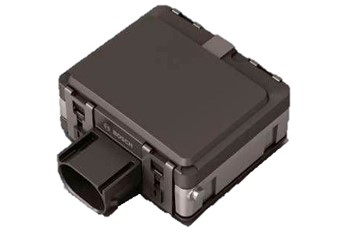
Open it and take a look:
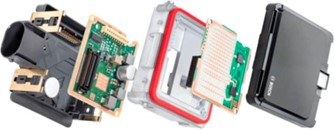
One of them is the antenna array, as shown in the following figure:
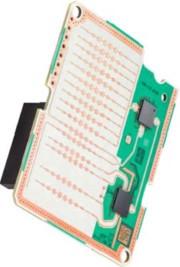
From top to bottom, there are 10 transmitting antennas TX1, followed by 2 transmitting antennas TX2, and finally 4 receiving antennas RX1 to RX4.
Two sets of transmitting antennas are responsible for detecting nearby and distant targets, with their coverage areas shown in the following figure:
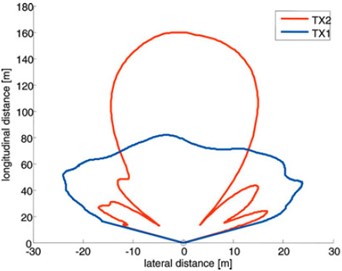
Here, because the field of view (FOV) is relatively large in the near range, about 90 degrees, more antennas are needed, while in the far range, the FOV is small, only about 20 degrees, so two antennas are sufficient.
The appearance of the radar installed on the car is shown in the following figure:

Radar emits and receives electromagnetic waves through antennas. The emitted electromagnetic waves are not uniform spherical waves, but are emitted in the form of directional beams with different intensities in various directions, as shown in the following figure:
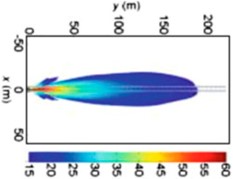
Radar mainly measures three parameters of the target: position, velocity, and azimuth. Below is a brief explanation of the measurement principles for these three parameters.
Position and speed
The measurement principles of these two parameters are explained in elementary school science textbooks: radar waves are emitted by the transmitting antenna, reflected by the target, and then received by the receiving antenna as radar echoes. By calculating the flight time of radar waves, multiplying it by the speed of light, and then dividing by 2, the distance between the radar and the target can be obtained.
According to the Doppler effect, the relative velocity of the target to the radar can be obtained by calculating the frequency change of the radar wave returned to the receiving antenna. Simply put, the relative velocity is proportional to the frequency change. When the target approaches the vehicle, the frequency of the echo increases compared to the transmission frequency, otherwise the frequency decreases.
The specific methods for measuring position and velocity vary depending on the modulation method used by the radar. Simply put, the modulation of radar is to achieve the recognition of radar echoes and the measurement of flight time, which requires adding markers and time references to the electromagnetic waves emitted by the radar. There are two main methods used in vehicle mounted radar: amplitude modulation and frequency modulation.
azimuth
Calculate the azimuth of the target by receiving the phase difference of radar waves reflected by the same target through parallel receiving antennas. The principle is shown in the following figure:
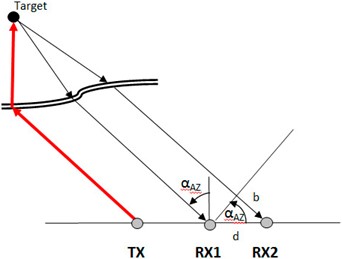
The azimuth angle α AZ can be calculated through a simple trigonometric function based on the geometric distance d between the two receiving antennas RX1 and RX2, as well as the phase difference b between the radar echoes received by the two antennas.
3、 Application examples
The three most common uses of millimeter wave radar are:
ACC (Adaptive Cruise Control)
BSD&LCA (Blind Spot Monitoring and Lane Changing Assistance)
AEB (Automatic Emergency Braking, usually combined with camera for data fusion)
As a technology that has been in mass production for many years, I think there is no need to introduce the specific content of the above functions again. Let’s talk about something more interesting:
a) Data processing flow of radar
The core technology for implementing ACC and other functions is target recognition and tracking. After the receiving antenna receives the radar echo and demodulates it, the controller digitally samples and filters the analog signal accordingly. Next, use FFT to transform the signal into the frequency domain. Next, search for specific features in the signal, such as energy peaks in the frequency domain. At this step, we cannot obtain the target we need, only the information of the reflection point of the radar wave is obtained.
Moreover, for many high-performance radars, the multiple reflection points obtained at this time may come from an object, such as a truck forming 5-10 reflection points. So first, it is necessary to match the reflection points that are likely to belong to the same object to the same reflection point cluster. Next, by tracking various clusters of reflection points, we can form a guess about the distribution of the object.
In the next measurement cycle, for example, using Kalman filtering, based on the previous object distribution, predict the possible object distribution in this measurement cycle, and then try to match the current reflection point cluster with the predicted result, for example, by comparing parameters such as object position and velocity. When the reflection point cluster matches the object information obtained from the previous measurement cycle successfully, the “trajectory” of the object is obtained, and the credibility of the object increases. Conversely, if it does not match, the credibility decreases. Only when the credibility of an object exceeds a certain threshold, will it become a target of our concern and enter the so-called target list.
b) Two small questions about radar
Can radar detect stationary targets?
Many early ACC systems did not respond to stationary objects, meaning that if there was a stationary object ahead, such as a vehicle parked in front before entering the detection range, ACC would not target that vehicle and would not issue a deceleration request. So some people think that radar cannot detect stationary objects, but this is actually a misunderstanding.
From the previous description, we can see that radar detection capability is only related to the radar wave reflection characteristics of an object, and does not involve any of its motion characteristics. Therefore, as long as the radar reflection cross-section of an object is large enough, there is no problem of it being undetectable. Early ACC did not respond to stationary objects mainly due to target classification. Due to the low angular resolution of early radar, the resolution in the height and horizontal directions was low, making it difficult to distinguish between objects that could be crossed, such as manhole covers, or objects that could be crossed from below, such as road signs.
So in order to avoid ACC misoperation, such as braking due to road signs on highways, it is designed not to react to stationary objects that have been detected since, because it is impossible to determine whether the object is infrastructure or a traffic participant. On the other hand, even in early ACC systems, due to the radar storing historical information of the target, if a detected vehicle brakes from driving to stopping, the system can still classify the object as a traffic participant and perform braking accordingly.
What are the advantages compared to LiDAR?
With the popularity of autonomous driving, LiDAR has received unprecedented attention due to its advantages of high precision, large information content, and immunity to visible light interference. But we can notice that the mainstream autonomous driving solutions have not completely abandoned millimeter wave radar. What is the reason for this?
Firstly, the weather conditions that everyone knows about. The wavelength of laser is smaller than that of millimeter wave radar (nm vs mm), so haze causing laser radar failure is not a joke. For the same reason, the detection range of millimeter wave radar can easily exceed 200 meters, while the current performance of laser radar generally does not exceed 150 meters. Therefore, for scenarios such as highways and cars, millimeter wave radar can do better.
